
What standards are ASABE currently working on that will affect agricultural equipment manufacturers?
Standards are a major focus area for ASABE and we have many updates, revisions and new projects underway that will impact the agricultural equipment industry. A full summary is available at www.asabe.org.
There is tremendous interest from the industry for ASABE to become more active in the sustainability efforts. This work will mainly focus on equipment issues and likely will involve identifying test and measurement criteria; however, related work is being studied at a manufacturing level. There is a lot of work underway to address anhydrous ammonia equipment safety. The scope of the project covers implements of husbandry, such as applicators, the tanks and wagons towed by them, hitches, hoses and personal protective equipment (PPE). There is a singular focus on operator and service personnel safety—the ASABE standard will not cover storage or over-the-road tanks, nor will it cover anhydrous theft issues. The committee is working to have a draft ready for public comment and committee ballot by early 2013.
ASABE has a long tradition of working closely with trade associations, since they often have the best pulse on industry needs. ASABE brings a neutral, unbiased venue for the development of consensus-based standards. Often the terms standards and regulations are used interchangeably and this can lead to confusion. For those of us working for a standards development organization, the difference is important and standards to ASABE represent consensus documents developed and adopted in a voluntary manner. Regulations are prescribed by a governmental authority. That being said, I firmly believe the best regulations are those created from the best voluntary consensus standards.
Last year you mentioned that AEM was pursuing a national requirement for adherence to the ASABE lighting standard and ag equipment markings on highways. What is the status on that?
Led by the Association of Equipment Manufacturers (AEM), the Highway Bill, which was signed into law this summer, references the key ASABE lighting and marking standards for new equipment used on public roads. Having a uniform national requirement will improve safety and eliminate confusion with differing state requirements. The next steps involve working with the U.S. Department of Transportation (DOT) to communicate and implement the national requirement.
How is the agricultural industry faring considering the drought?
The summer of 2012 was a challenging time for many involved in production agriculture. The drought was especially severe in the U.S. However, parts of Europe and other places globally received less precipitation than normal. It will take time to fully sort out the domestic economic impact caused by the drought; crop insurance will be a saving grace for many. Events like this often drive technology, and keen interest in irrigation and moisture management advancements is already growing. Some producers will decide to replace machines that were marginal in good years recognizing that in harsher growing conditions like drought, the margin for error is not there.
What are growth opportunities for ag equipment manufacturers?
A significant opportunity exists with reducing the amount of postharvest loss, especially in developing nations. Postharvest loss refers to crops and products wasted after harvest, primarily during the handling, storage, transportation and processing stages. It is believed that nearly one-third of all agricultural production is wasted and doesn't reach the food consumer. Exciting work is taking place at the ADM Institute for the Prevention of Postharvest Loss led by the University of Illinois at the research level, and much of these results will have major economic opportunity for the equipment and storage industries.
What challenges are there for full-vehicle automation?
Predicting the future is never easy. There remain technological issues to overcome with fully autonomous equipment, but the most significant challenges involve safety. Great strides are being made, and I predict autonomous farm machinery will become mainstream long before levitating automobiles, which were long predicted to be available by now. A lot is happening in the Information and electrical technologies fields.
Is ASABE assisting in the development of automation communication global standards?
ASABE is working with a number of organizations globally to define the language and standards necessary for advancing further automation adoption. ASABE administers the international standards committee, which is making good progress on elements of this complex subject. In addition, agricultural equipment manufacturers have agreed on ISOBUS as the universal protocol for electronic communication between implements, tractors and computers. The primary goal of ISOBUS is to achieve full compatibility of data transfer between mobile systems and the office software on the farm. See the Agricultural Electronics Foundation (AEF) for details online at www.aef-online.org
How does an election year affect the ag industry and ag equipment manufacturers?
The lead-time for standards and technological developments is long and often insulated from short-term items like elections. However, there are several notable current events that raise concerns. The on-going delay in reaching agreement on the Farm Bill impacts everyone involved with agriculture. All businesses dislike uncertainty, and the longer it takes for resolution, the longer many businesses will delay making key decisions.
From a research and development standpoint, the recent report from the Organization for Economic Cooperation and Development entitled "Agricultural Policy Monitoring and Evaluation 2012: OECD Countries," warns that the rate of growth in yields in the major field crops has begun to slow precisely at a time when global food demand will reach an all-time high. The looming likelihood of additional steep reductions in public funding for U.S. agricultural research will have a significant negative affect.

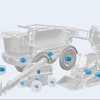




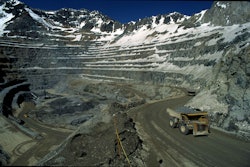



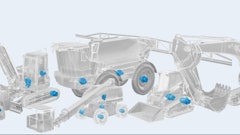


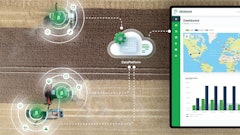
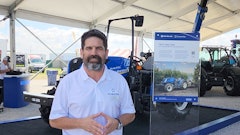



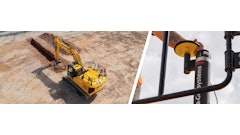
![Hd Hyundai Xite Transformation Booth Image[1]](https://img.oemoffhighway.com/files/base/acbm/ooh/image/2023/12/HD_Hyundai_Xite_Transformation_Booth_Image_1_.657a32d4218f2.png?ar=16%3A9&auto=format%2Ccompress&fit=crop&h=135&q=70&rect=113%2C0%2C1600%2C900&w=240)
